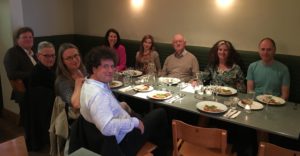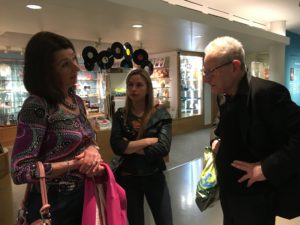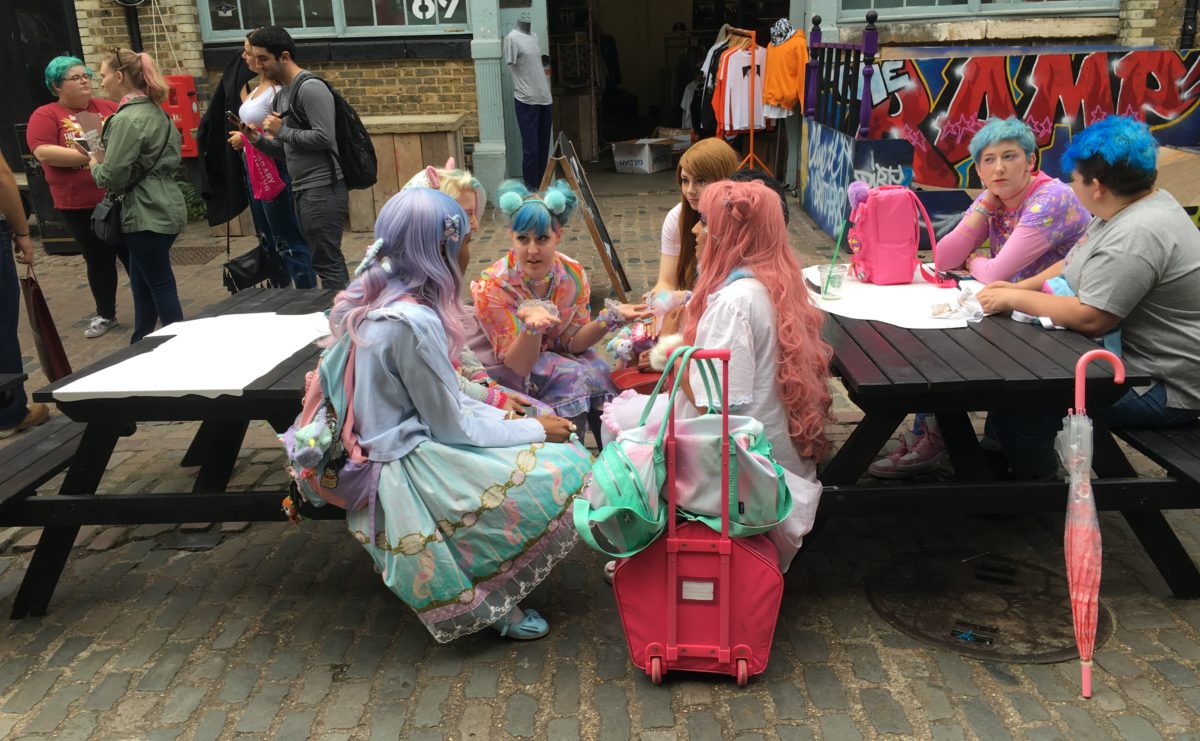A Dannhauser born in Lyon, who has already lived in Göteborg. A Brunner born in Vienna and saved from the Nazis through a Kindertransport to Great Britain. A descendant of Rabbi Kafka who was born in Benghazi in Libya, a Brunner descendant who was born in Milan and grew up in Malaga in Spain, a British born Bernheimer descendant who only recently learned about her Hohenems connection. A violonist, a Catholic priest, an archivist of the British Library, a French language teacher, an artist, and a Rosenthal who is a curator at the London Jewish Museum and the only one at the table who was NOT a Hohenems descendant or spouse—that was the crowd meeting in the nice Market Restaurant on Parkway in Camden last Thursday.

On the occasion of the London presentation of our exhibition “Jukebox. Jewkbox! A Century on Shellac and Vinyl!” we organized a little London pre-reunion of Hohenems descendants. After a tour through the exhibition, we enjoyed spending time together and I had the chance to give an update on the museum’s development and the preparations for the big event next year—when we expect descendants from all over the world for the third Hohenems Reunion, celebrating 400 years of Jewish presence in Hohenems and the Hohenems Diaspora.
For some, meeting in London was an opportunity to reunite with more or less distant cousins having already seen in Hohenems and to exchange updates on family events, careers and life. For others, it was a first encounter with each other and with the Hohenems background of their families.
It was also definitely an encounter with a dimension of 20th century popular culture that was unknown to most before our exhibition. Telling the history of the global music business and of pop music that connected the world with the invention of the gramophone and the record was a thrilling experience. It’s all about “identity” in the making. And as is common with this quest for identity, you end up with something round and nice, like a record of shellac or vinyl: with a long spiral trajectory and nothing but a hole in the middle—a blind spot, something that you must leave open as a question.

But there is one thing we do know—and it’s a funny story itself. In some way, the history of pop music starts in Hohenems. How could this be?
In 1826, a young cantor from Hohenems, Salomon Sulzer, was invited to become chief cantor of Vienna. Soon he became a star in this world capital of music of the time. He was the first Jewish musician that non-Jews listened to in great numbers. He ranked among the greatest composers of the time, along with Schubert and Liszt. He was among the first who set Jewish prayers in written, notated music that could be sung by professional choirs. His composition had a strong impact on his contemporaries. He composed and performed secular music with lyrics from Goethe to revolutionary songs. He was adored like a star by Jews and non-Jews alike. And he became the role model for many Jewish musicians who crossed the border between the synagogue and later Broadway and Tin Pan Alley, where Jewish musicians (especially the sons of cantors) became prominent and successful performers, composers and producers of popular music, shows and musicals after Sulzer’s time. They formed a line ending (preliminary) with punk bands like The Clash and singers like Amy Winehouse.
The story, therefore, of how pop music started is a strange bit of chance, and it might even be pure legend. When Salomon Sulzer was a child, he fell into the Ems creek but was saved. His parents swore an oath that he would serve his community by becoming a singer in the synagogue. We’ll say “se non e vero e ben trovato”—even if if it is not true, it is a good story to tell.
Getting together with a crowd from Hohenems in “Jukebox. Jewkbox!” in London—specifically in Camden town, the birth place of British pop, just a few blocks down from Camden Market where the Clash once rehearsed and where today a small monument commemorates Amy Winehouse—is a particularly nice spiral movement toward the riddle in the middle. I greatly enjoyed that.


Thank you, Jessica! I wish I could have been there 🙂
I see several familiar faces. I’ve enjoyed your posts; they’re both educational and entertaining. Keep up the good work.
Great blog Jessica
Very interesting
Thank you